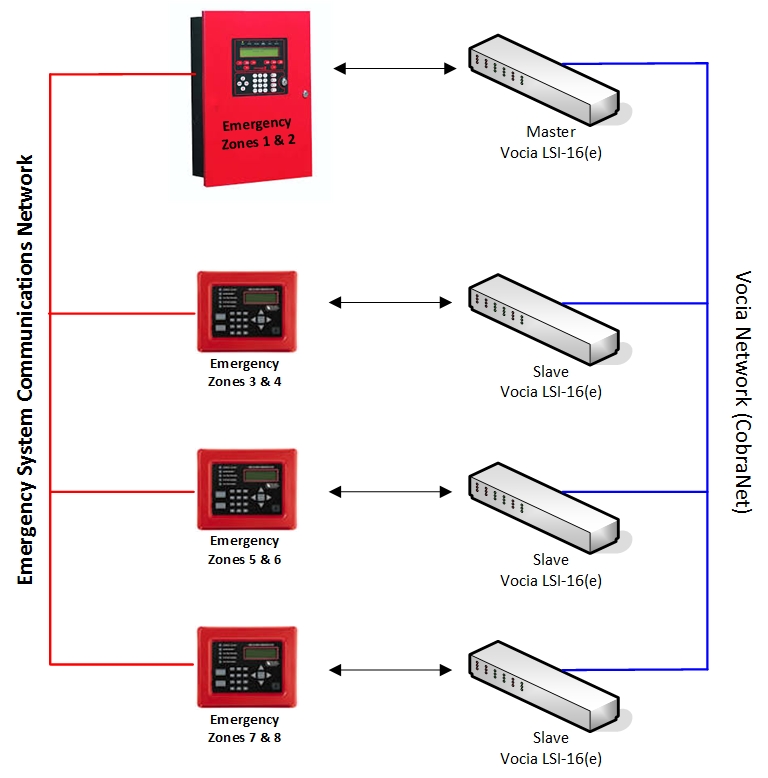
This section aims to provide information of the operation and software behavior when multiple LSI-16(e)'s are configured in the software. Refer to the LSI-16(e) section for device configuration specifics.
Emergency systems in large venues are typically comprised of a network of fire panels or EWIS devices, each of which monitors a subsection of the buildings emergency system. From Vocia software version 1.7 forward, multiple LSI-16(e) devices are allowed within a single World. This feature has been designed to provide an additional level of redundancy and remove the central point of failure that comes from using a single master emergency controller. The mixed use of LSI-16's and LSI-16e's in an Emergency subsystem is supported.
Note that in an EN54-16 system, the use of more than one LSI-16 or LSI-16e is not compliant.

Each World can only contain one master LSI-16(e). There can be multiple slave LSI-16(e)'s but only ever one master. The master device will be indicated by a red underline in the device tree view. This is shown by the LSI-16 with the Device ID of '01' in the image below.

Once more than one LSI-16(e) is added to the layout the tree structure of the main window will update to a Master/Slave device view. The LSI-16(e) that is to be the master can be selected or changed at any time via the right-click context menu. If the master LSI-16(e) is deleted, the next available LSI-16(e) becomes the master device. In a Master-Slave LSI-16(e) system, the LSI-16(e) context menu has been updated to include the “Add GPIO-1” menu item. In this mode GPIO-1’s will be listed below the LSI-16(e) that they report to. Each LSI-16(e) also has Audio Inputs and Audio Outputs sub-folders. These relate to the input and output devices that the LSI-16(e) supervises.
Note that in a Master-Slave LSI-16(e) system when network connectivity between the Slave LSI-16(e) and the Master LSI-16(e) is lost, the Slave LSI-16(e)'s will indicate a Fault in the software tree view and in the network logger, however there is no LED indication on the front panel.

Converting either a WS-10 or WS-4 to an Emergency paging station will automatically move the paging station into the master LSI-16(e) input folder. Converting a EWS-4 or EWS-10 to a non-emergency paging station will automatically move it to the non-emergency inputs folder. In both cases, the device will be selected in the tree after conversion to indicate its new position.
In Master-Slave mode the drag-&-drop of devices is supported. The following rules apply to the drag-&-drop feature in the device tree:
Once a World has greater than five Emergency Subsystems / LSI-16(e)’s it is deemed to be a large Master-Slave system. In order to support large Master-Slave systems the internal and external CobraNet bundles need to be re-assigned when this number is reached or exceeded. To acknowledge bundle re-allocation will occur, a check box under the Tools > Options > Project > Support Large Master-Slave Emergency Subsystems must be enabled. All external CobraNet input and outputs should be verified for correctness after making this change.